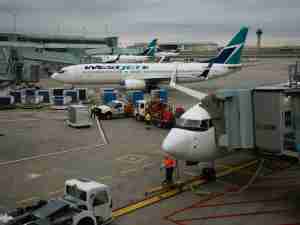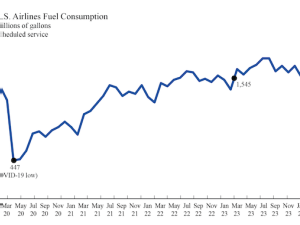Boeing Co. suspended its 2019 financial forecast as executives grapple with one of the worst crises in the planemaker’s century-long history.
The previous outlook doesn’t reflect the grounding of the 737 Max jetliner after two deadly crashes in a five-month span, Boeing said in a statement Wednesday as it reported earnings. The company said it would issue a new forecast at a future date.
Investors will look for the company’s conference call for a new glimpse of Boeing’s strategy for dealing with the financial aftermath of a global grounding that has already lasted six weeks. While first-quarter earnings trailed analyst estimates, the real focus for investors is on Boeing’s effort to contain the damage to its reputation and the lucrative 737 program, the company’s biggest source of profit.
“We believe the 737 Max issues will almost certainly overshadow the quarter itself, given the gravity of the situation,” Credit Suisse Group AG analyst Robert Spingarn predicted in a report before earnings were released.
The shares rose less than 1 percent to $377.47 before the start of regular trading in New York. Through the close of trading Tuesday, Boeing had fallen 11 percent since the crash in Ethiopia, the biggest drop on the Dow Jones Industrial Average.
Chief Executive Dennis Muilenburg and Chief Financial Officer Greg Smith will discuss Boeing’s results and outlook in a call slated for 10:30 a.m. in New York.
Cash Conservation
The manufacturer has redesigned software linked to an Ethiopian Airlines accident March 10 and an October tragedy in Indonesia, and is expected to submit the changes to the Federal Aviation Administration soon. But convincing regulators—and passengers—of the Max’s safety will be a complicated task. In all, 346 people died in the crashes.
While the Max’s indefinite grounding drags on, Boeing’s management team is focusing on conserving cash and tamping down costs. The company has temporarily slowed its 737 final assembly line by 19 percent to build only 42 planes a month, the first such factory slowdown since the Sept. 11 terrorist attacks disrupted air travel in 2001.
The rate cut was abrupt—such moves are typically flagged a year in advance. Blunting the blow somewhat, Boeing is picking up the bill as suppliers such as Spirit AeroSystems Holdings Inc. continue work at the previous production pace of 52 planes a month.
The changes to 737 production didn’t take effect until mid-April, so the full impact on cash and profit will first be reflected in second-quarter earnings. But since the measure was announced in late March, it had to be incorporated into first-quarter profit margins for Boeing’s commercial division.
Operating profit for the commercial-airplane unit was 9.9 percent of sales for the first quarter, compared with 11 percent a year earlier. Boeing’s defense division had a 13 percent operating margin during the latest quarter, while the services unit posted 14 percent.
Risk Returns
Robust sales at the defense and services divisions helped Boeing withstand the pressure from the Max grounding, as did a production increase for the 787 Dreamliner, another source of cash. Still, there’s a risk that investors will lose patience if regulators are slow to allow flights of the 737 Max, a key source of cash for Boeing.
The Max’s devastated safety record and production miscues for other aircraft such as a military tanker threaten another selling point for investors looking at Boeing, said Carter Copeland, an analyst with Melius Research. After the 787’s early stumbles, the Chicago-based planemaker began a systematic campaign to root out risk in an effort to protect shareholders from negative surprises.
“The 737 Max crisis represents a pivotal point on this journey and could materially shape the views of the investment community on BA long after the earnings implications are well understood,” Copeland wrote in a note to clients this week, referring to Boeing by its ticker symbol.









